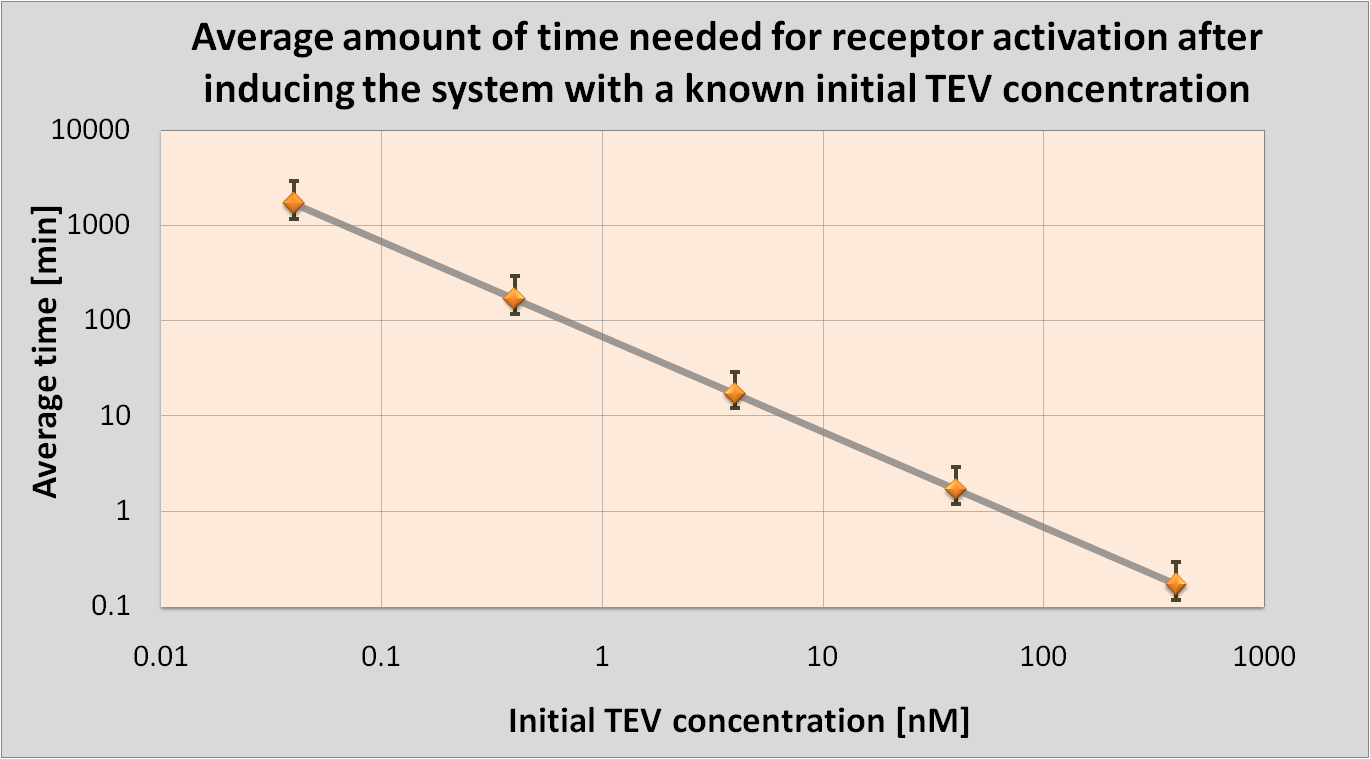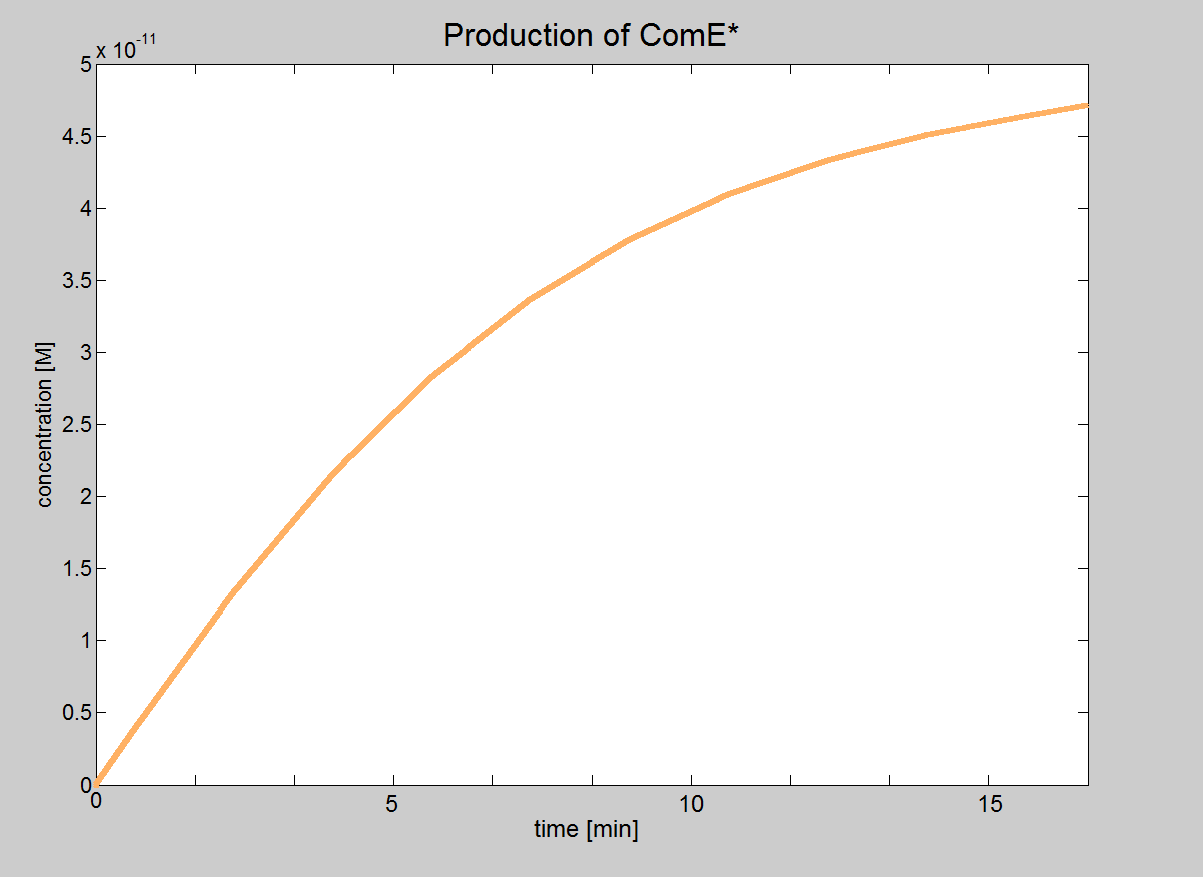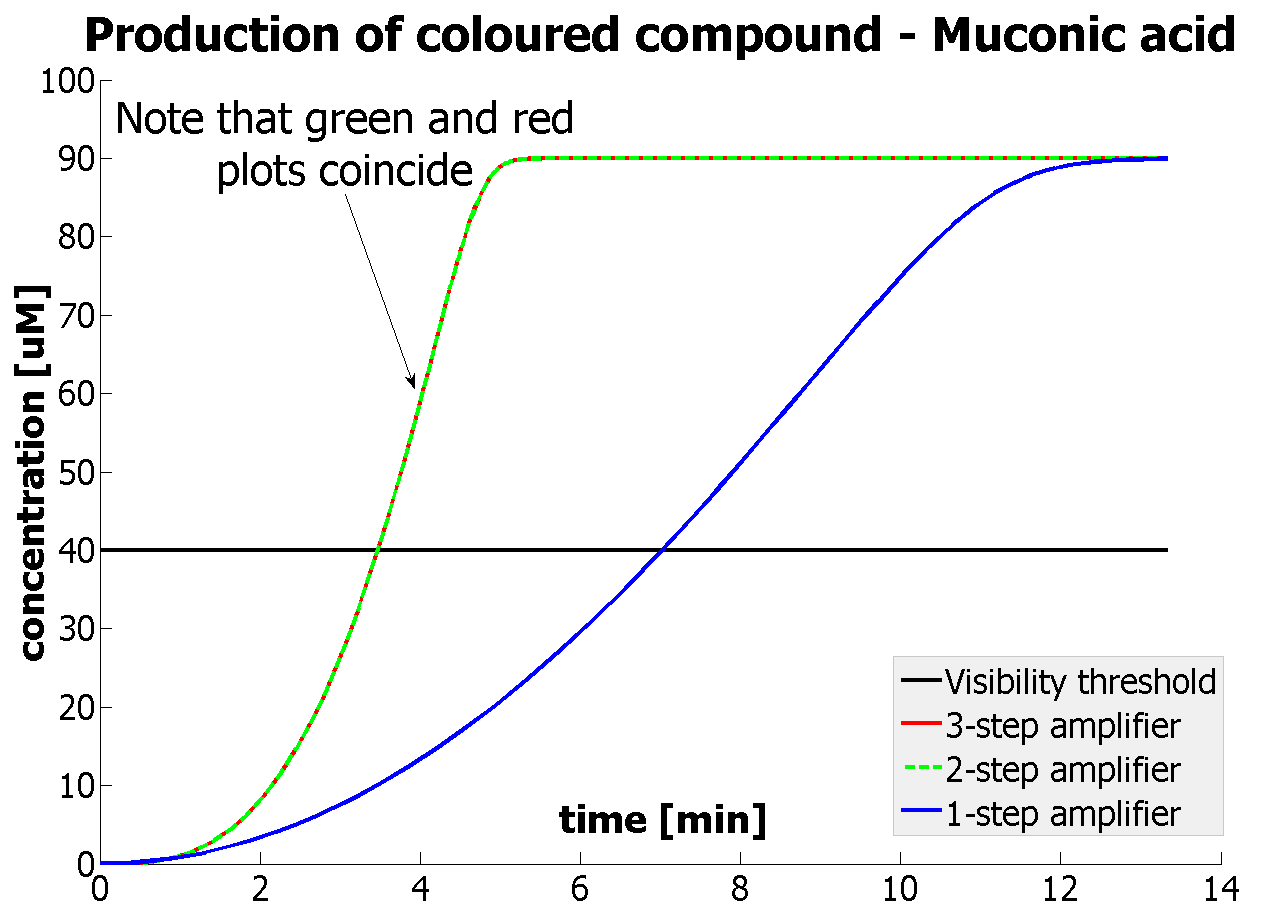Team:Imperial College London/Modelling
From 2010.igem.org
m |
|||
| Line 61: | Line 61: | ||
<li>It was concluded that there is no advantage of 3-step amplification over 2-step amplification. Therefore, the design of a 3-step amplifier was abandoned.</li> | <li>It was concluded that there is no advantage of 3-step amplification over 2-step amplification. Therefore, the design of a 3-step amplifier was abandoned.</li> | ||
<li>The results concerning the 2-step amplification module were not totally conclusive. It could not be firmly decided whether 2-step amplification is going to perform better than 1-step amplification. This is because several of the parameters that 2- and 1-step amplifiers are sensitive to could not be determined with certainty. Two parameters have been recognised as crucial and decisive. These are the protein production rates and the catalytic constants of the enzymes.</li> | <li>The results concerning the 2-step amplification module were not totally conclusive. It could not be firmly decided whether 2-step amplification is going to perform better than 1-step amplification. This is because several of the parameters that 2- and 1-step amplifiers are sensitive to could not be determined with certainty. Two parameters have been recognised as crucial and decisive. These are the protein production rates and the catalytic constants of the enzymes.</li> | ||
| - | <li>Hence, the conditions for effective amplification were determined.</li> | + | <li>Hence, the conditions for effective amplification were determined (more details are revealed in the Fast Response Model [[Team:Imperial_College_London/Modelling/Output/Results_and_Conclusion|Results]] page).</li> |
</ol> | </ol> | ||
| Line 80: | Line 80: | ||
|<b>Detection Model</b><br/> | |<b>Detection Model</b><br/> | ||
Goals: | Goals: | ||
| - | <ol><p>The aim of this model is to determine the concentration of Schistosoma elastase or TEV protease that should be added to the bacteria in order to trigger a response | + | <ol><p>The aim of this model is to determine the concentration of Schistosoma elastase or TEV protease that should be added to the bacteria in order to trigger a response.</p> |
| - | <p>It was also attempted to model how long it takes for the protease or elastase to cleave the required amount of peptides.</p> | + | <p>It was also attempted to model how long it takes for the protease or elastase to cleave the required amount of peptides to activate receptors.</p> |
</ol> | </ol> | ||
Revision as of 17:29, 27 October 2010
| Modelling | Overview | Detection Model | Signaling Model | Fast Response Model | Interactions |
| A major part of the project consisted of modelling each module. This enabled us to decide which ideas we should implement. Look at the Fast Response page for a great example of how modelling has made a major impact on our design! | |
| Introduction to modelling | ||||||
In the process of designing our construct three major questions arose which could be answered by computer modelling:
We came up with a novel idea of detecting organisms that we do not have a specific receptor for. In our particular example, the protease of Schistosoma is meant to cleave a protein displayed on the bacteria's cell wall. The cleaved peptide is supposed to be recognized by the receptor which would activate the colour expression. This solution raised questions about the risk of false positive or whether there are any chances for ComD receptors to be activated in the diluted environment. Modelling of this module would enable us to answer these questions.
We decided to use the ComCDE signalling pathway from S.pneumoniae and so questions arose on whether it would work appropriately in B.subtilis. We modelled this system to make sure that the signalling pathway would be working as anticipated.
We came up with an idea of using the amplification of a colour output, which would show within minutes of the stimulus being added. The question that arose was whether amplification will actually perform better than simple production (i.e. transcription and translation) in the cellular environment. Furthermore, we had difficulties deciding whether we should design the amplification module to consist of 1,2 or even more amplification steps. These issues were quite difficult to answer, so we decided to employ modelling. |
| Results & Conclusions |
Detection Model
|
| Signalling Model Even though our model of the signalling module is more simplistic than the real life situation, it provided very important results. We were able to determine under which conditions the signalling pathway would be working and could obtain the major constraints of our system. These constraints are that the necessary concentrations for ComD and AIP are reached before signal transduction is started. |
Fast Response Model
|
 "
"










